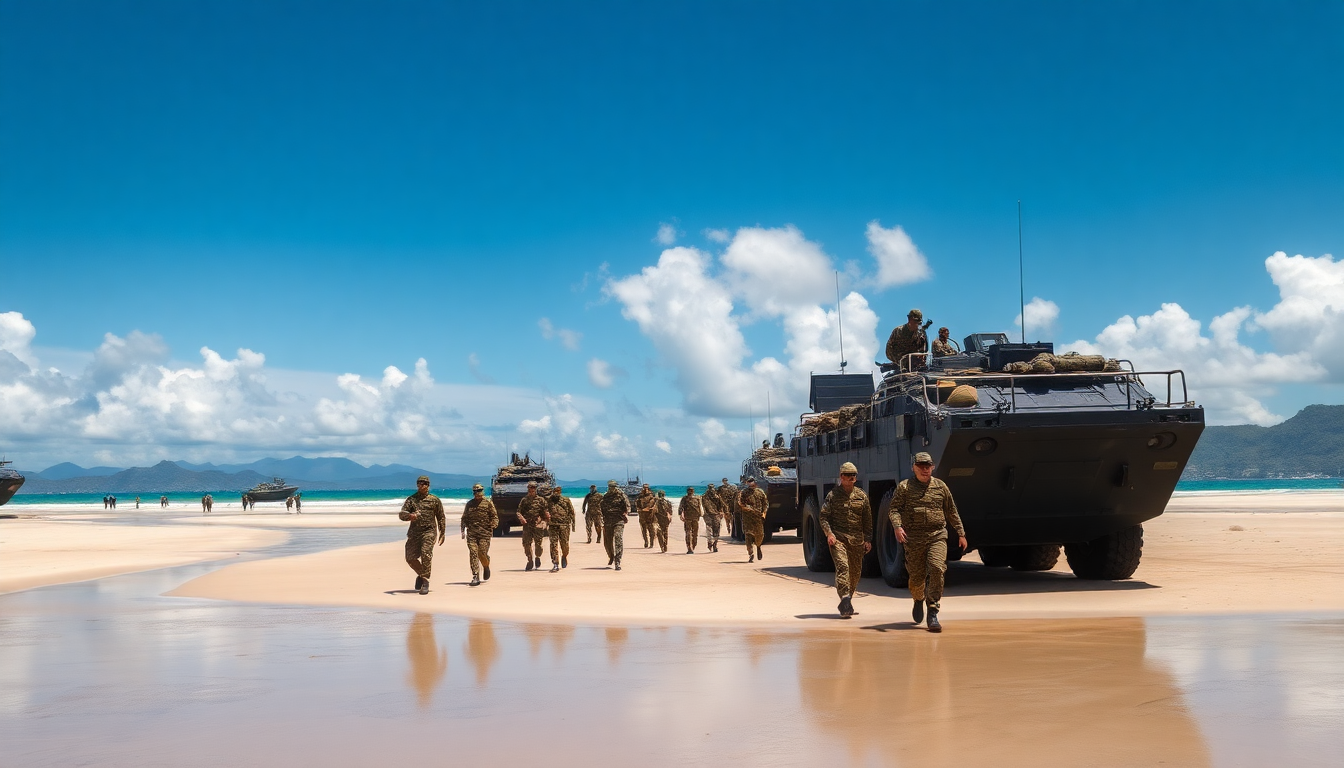Table of Contents
In a world where geopolitical tensions are on the rise, the involvement of Papua New Guinea and Fiji in this year’s Talisman Sabre exercise is grabbing headlines. But this collaboration is more than just a show of military strength; it symbolizes the growing bond between Australia and its Pacific neighbors. Together, they’re making a strong statement about their commitment to regional security. As military exercises evolve in scale and complexity, the impact of these partnerships goes far beyond the training grounds, influencing diplomatic relations and strategic positioning in the Asia-Pacific region.
The Importance of Talisman Sabre
Talisman Sabre is no ordinary military exercise. It’s a gathering that unites forces from various nations, creating a vital platform to boost interoperability and operational readiness. This year’s iteration is particularly impressive, with over 30,000 personnel from 19 different nations participating, marking it as the largest in its history. Such a turnout isn’t just impressive; it underscores a strong commitment to cooperative defense initiatives, especially in today’s rapidly changing security landscape.
According to Vice-Admiral Justin Jones, a senior Australian naval officer, the involvement of Papua New Guinea’s Defence Forces is a significant indicator of the ongoing integration of military capabilities between Australia and Papua New Guinea. This relationship is key—it’s about strengthening bilateral ties and positioning both nations as crucial players in maintaining stability in the Pacific. With military exercises like Talisman Sabre, there’s a clear message: regional security is a shared responsibility, and collaboration is essential.
Regional Implications of Military Exercises
So why does the participation of Fiji and Papua New Guinea in high-profile military exercises matter? It’s emblematic of a larger strategy to fortify defense alliances in the Pacific. These nations are strategically positioned to influence regional security, and their involvement sends a clear message to potential adversaries: the Pacific Islands are united in their defense goals. By integrating their forces with those of Australia and other allies, they’re fostering a sense of solidarity that’s increasingly crucial in light of rising tensions, particularly in the South China Sea.
The implications of these military collaborations are profound. As nations like Papua New Guinea and Fiji align themselves with larger military powers, they not only enhance their own defense capabilities but also contribute to a more robust security framework in the region. This cooperation helps deter potential threats and allows for a coordinated response to crises, should they occur. It also underscores the importance of regional partnerships that prioritize collective interests in the face of global challenges.
Looking Ahead: Trends in Pacific Defense Cooperation
As we gaze into the future, it’s clear that trends in military cooperation among Pacific nations are poised to evolve even further. The ongoing need for joint training exercises and strategic dialogues will be critical as countries navigate shifting geopolitical dynamics. The increased participation of nations like Papua New Guinea and Fiji in exercises such as Talisman Sabre is likely to set a precedent for future collaborations, creating an environment where regional security is a shared mission.
Moreover, the emphasis on enhancing defense capabilities through exercises that promote interoperability will continue to be a cornerstone of Pacific defense strategies. As nations recognize the urgency of presenting a united front against potential security threats, the role of military exercises in fostering trust and collaboration will remain vital. Strengthening these relationships not only bolsters national defense but also contributes to a stable and secure Pacific region. Isn’t it interesting to think about how these collaborative efforts can shape the future of security in our world?


